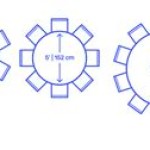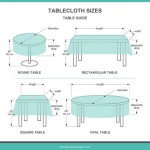Billiards Table Size Guide: Choosing the Right Table for Your Space
The selection of a billiards table involves carefully considering several factors, with size being paramount. An appropriately sized table optimizes gameplay, ensures comfortable movement around the table, and contributes to the overall aesthetics and functionality of the space it occupies. This guide provides a comprehensive overview of billiards table sizes, room dimensions, and other key considerations to aid in making an informed decision.
Billiards tables are not a one-size-fits-all proposition. They come in various dimensions, each catering to different skill levels, playing preferences, and room sizes. Understanding these variations and their implications is crucial for creating an enjoyable and functional billiards environment.
Standard Billiards Table Sizes: An Overview
The primary differentiator between billiards tables lies in their playing surface dimensions, typically measured in feet. The most common sizes are 7-foot, 8-foot, and 9-foot tables. While other sizes exist, these three represent the standard options found in homes and recreational settings.
7-Foot Tables: Often referred to as "bar tables," 7-foot tables measure approximately 3.5 feet by 7 feet in playing surface. These tables are well-suited for smaller spaces and are frequently found in bars, pubs, and apartments where space is limited. Due to their smaller size, they generally offer a faster-paced game with shorter shots.
8-Foot Tables: An 8-foot table, measuring roughly 4 feet by 8 feet in playing surface, strikes a balance between playability and space requirements. This size is a popular choice for home use, providing a more challenging game than a 7-foot table without demanding the extensive space of a 9-foot table. There are also "8-foot oversized" tables, which are slightly larger than standard 8-foot tables and provide a playing experience closer to that of a 9-foot table.
9-Foot Tables: The standard size for professional tournaments and competitive play, 9-foot tables measure approximately 4.5 feet by 9 feet in playing surface. These tables demand a larger room and offer a more challenging and nuanced game, requiring greater precision and strategic shot-making. They are ideal for serious players and those with ample space.
Beyond these standard sizes, novelty tables and custom-built tables can exist in various shapes and dimensions. However, for the purpose of this guide, the focus remains on the most prevalent options.
Room Size Requirements: Ensuring Adequate Play Space
Selecting the right table size is only half the equation. Equally important is ensuring that the room is large enough to accommodate the table and allow for comfortable movement and unrestricted cueing space around it. Insufficient space can lead to awkward shots, damaged cues, and a frustrating playing experience.
To determine the minimum room size, consider the length of a standard pool cue, which is typically 58 inches (4.83 feet). Cue lengths can vary, and shorter cues are available for tight spaces, but it's generally advisable to plan for standard cue length to avoid limitations.
The ideal room size is calculated by adding twice the length of the cue to each dimension of the table's playing surface. This formula provides the minimum space required for comfortable cueing on all sides of the table.
For example:
7-Foot Table: (3.5 feet + 4.83 feet + 4.83 feet) x (7 feet + 4.83 feet + 4.83 feet) = 13.16 feet x 16.66 feet
8-Foot Table: (4 feet + 4.83 feet + 4.83 feet) x (8 feet + 4.83 feet + 4.83 feet) = 13.66 feet x 17.66 feet
9-Foot Table: (4.5 feet + 4.83 feet + 4.83 feet) x (9 feet + 4.83 feet + 4.83 feet) = 14.16 feet x 18.66 feet
These calculated dimensions represent the absolute minimum. Adding extra space, particularly along the more frequently used sides of the table, is highly recommended. Obstructions like walls, furniture, or columns can further necessitate larger room dimensions.
It's important to note that these calculations assume standard cue length. If shorter cues are planned, the room size can be adjusted accordingly. However, relying solely on shorter cues can limit gameplay and is generally not advised for a dedicated billiards room.
Other Considerations: Beyond Size and Space
While size and room dimensions are the primary factors, other considerations can influence the final decision regarding a billiards table. These include slate thickness, cloth quality, table leveling, and room aesthetics.
Slate Thickness: The slate bed of a billiards table is the foundation for gameplay. Thicker slate provides a more consistent and accurate playing surface. Standard slate thicknesses range from 3/4 inch to 1 inch. 1-inch slate is generally preferred for larger tables and more serious players, as it minimizes warping and ensures long-term stability.
Cloth Quality: The cloth covering the slate greatly impacts ball speed, spin, and overall gameplay. Higher-quality cloth offers a smoother, more consistent surface and is more resistant to wear and tear. Wool and wool-nylon blends are common choices, with worsted wool cloth being a premium option known for its durability and performance.
Table Leveling: A perfectly level table is essential for accurate gameplay. Even slight imperfections in leveling can significantly affect ball roll and shot accuracy. Professional installation is highly recommended to ensure proper leveling and avoid future issues.
Room Aesthetics: The billiards table should complement the overall aesthetics of the room. Consider the table's style, finish, and cloth color to ensure it integrates seamlessly with the existing décor. Lighting is also crucial, providing adequate illumination over the playing surface and surrounding area.
Accessibility also plays a role. Ensure that the table can be moved into the room without issue. Taking accurate measurements of doorways and hallways is critical before purchase.
Finally, budget constraints will always be a factor. Billiards tables range widely in price, and balancing desired features with financial limitations is a key part of the decision-making process. Explore different brands and compare features to find the best value within the allocated budget.
Careful consideration of these factors, alongside table size and room dimensions, will facilitate a well-informed decision, ultimately leading to a billiards room that is both functional and enjoyable for years to come.
Ultimately, the best billiards table size depends on the specific needs and circumstances of the individual player and the available space. Evaluating these needs, accurately measuring the room, and considering additional factors will contribute to creating an ideal billiards environment.

Standard Size Of A Pool Table

Pool Table Room Size Guide Chart Birkbeck Billiards

Pool Table Room Size Guide Home Leisure Direct

Room Size Specifications Olhausen Billiards

Pool Table Room Size Guide Chart Birkbeck Billiards

Room Size Specifications Olhausen Billiards

What Size Room Will I Need For My Snooker Table Liberty

Pool Table Room Size Guide Home

Supreme Pool Table Room Size Information

Room Size Pooltables Com








